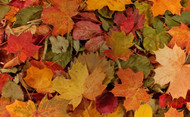You will need the above, and the following: for trees and shrubs you may need loppers. Not because it’s pruning season, but because the falling leaves will allow you to see the full structure of the shrub or tree. In the fall, you’re looking for dead, damaged or diseased branches. These can be and should be removed when found. However, if the plant can be pruned in the fall, then fall is a good time to prune, since you’re out there already. Know your plants and the correct time to prune them, or else you may not have blooms in the spring.
Speaking of falling leaves, studies are finding that you should leave the leaves in your garden beds. The leaves break down and return nutrients to the soil and act like mulch to insulate and moderate temperatures for the dormant plants. Leaving the leaves also leaves next year’s pollinators: butterfly and moth caterpillars, solitary bees, and fireflies, and other good bugs who all overwinter in the leaf litter. Raking them up and putting them at the curb, removes the pollinators from your garden. But that doesn’t mean you can’t be neat. You can remove them from your lawn and pathways. Raking the leaves from the lawn into your beds is made easier by the right rake. This rake has an interesting feature. It saves your back! By allowing you to pick up the leaves without bending over.
For flowering plants, such as coneflowers and otherwildflowers, consider leaving the seed heads to feed the birds. And after they have eaten all the seeds, save the stems! You can trim the flower stalks to various heights. This again provides shelter for nesting and overwintering insects that need the hollow or pithy stems to lay eggs or wait out the winter.



